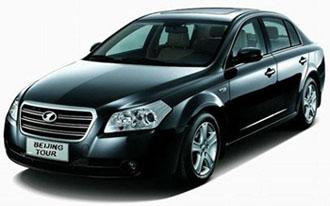Highlights:
• This tour contains 2 of the can’t-miss sights of Beijing, the Great Wall and the Temple of Heaven. The section of the great wall you will visit today is Mutianyu, and while it is restored and is strikingly beautiful, it is not nearly as crowded and touristy as the Badaling Great Wall. The Temple of Heaven was the center and holiest site of Imperial China’s Heaven Worship, where the Emperor would perform his solemn rites on behalf of the country
• You will be accompanied on your tour by a professional English-speaking guide, which will make your tour informative, fun, and worry-free.
• Lunch is included on this tour, and so is pick-up and drop-off from your hotel. You will be back no later than 6pm, allowing you to have a full evening of activity on Beijing.
Detailed itinerary:
1. At round 7:30am you will be picked up from your hotel by your English-speaking guide, and by private van we will set out for the Mutianyu Great Wall, and the drive should take about 1.5 hours.

2. We will arrive at the Mutianyu Great Wall. As one of the best-preserved parts of the Great Wall, the Mutianyu section of the Great Wall used to serve as the northern barrier defending the capital and the imperial tombs. First built in the mid-6th century during the Northern Qi, Mutianyu Great Wall is older than the Badaling section of the Great Wall. In the Ming dynasty, under the supervision of General Xu Da, construction of the present wall began on the foundation of the wall of Northern Qi. In 1404, a pass was built in the wall. In 1569, the Mutianyu Great Wall was rebuilt and till today most parts of it are well preserved. Compared with other sections of Great Wall, the Mutianyu Great Wall possesses unique characteristics in its construction. Watchtowers are densely placed along this section of the Great Wall - 22 watchtowers on this 2,250-meter-long stretch. The Mutianyu Pass consists of 3 watchtowers, one big in the center and two smaller on both sides. Standing on the same terrace, the three watchtowers are connected to each other inside and compose a rarely seen structure among all sections of Great Wall. To get on the wall, you can either walk up or take the cable car, but on the way down you can take a toboggan ride, which is a lot of fun and highly recommended!
3. After about 2-3 hours of trekking along the wall, we will take a break for a Chinese lunch, and then we’ll drive to central Beijing in order to visit the Summer Palace.

4. In the early afternoon we will arrive at the Temple of Heaven. The complex was visited by the Emperors of the Ming and Qing dynasties for annual ceremonies of prayer to Heaven for good harvest. The Temple of Heaven park is best known for the Hall of Prayer for Good Harvests, an iconic building famed for its magnificent triple-gabled circular roof. You will also have an opportunity to walk the same imperial walkway that the same emperors walked hundreds of years ago in their holy rites. You will also see Beijing’s senior citizens using the park grounds for everything from tai chi and ballroom dancing to bullwhip practice!
5. After our tour of the Temple of Heaven, you’ll be dropped off back at your hotel, at no later than 6:00pm, allowing you to have time for dinner and anything else you’d like to do in the evening.

Mutianyu Toboggan (German technology) |
Optional Toboggan Run at Mutianyu
(extra)
You'll surely be intrigued about taking the toboggan down
from Great Wall to the entrance gate down the hill. You can
ride as fast or as slow as you want. However, it is also a
driving test. One person to a toboggan, you have a little
handle with which you press down to go faster and pull up to
stop. But if you are not intentionally pushing it, it will
slow down anyway. "It is funny when we Westerners are on
there, because we like to go a bit quicker than the Chinese
(read a lot quicker) and you hear the shrill voices of
locals shouting "brake! brake! Slow down!" It is hilarious.
Go on it even if it is just to hear that." --taylorstonebridge on LonelyPlanet
People at age 70 have managed the riding successfully. Can
you? |
|






